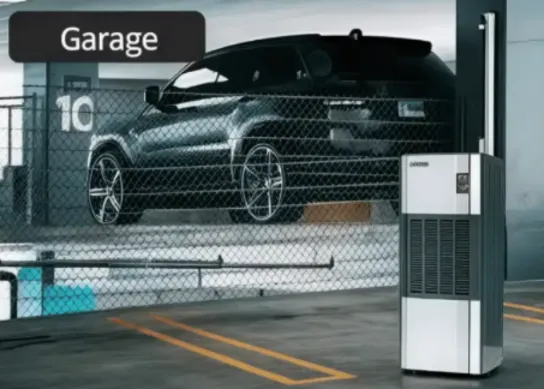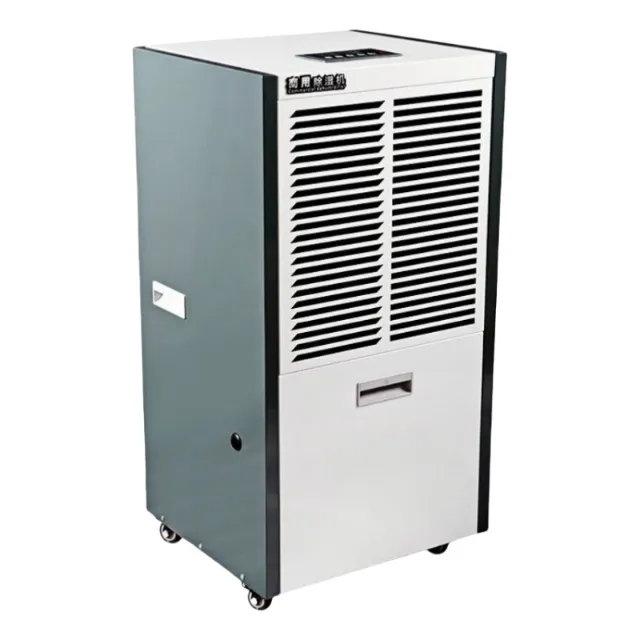How to Choose the Right Commercial Dehumidifier for Your Space?
Commercial spaces often battle humidity woes. Picking the best dehumidifier can truly help. This guide simplifies the process so businesses nail the choice.

The Importance of Dehumidifiers in Commercial Spaces
Why Humidity Control Matters for Business
Too much moisture messes things up at work. It sparks mold, ruining stock in warehouses or spoiling food in eateries. Picture a gym where the air feels heavy with sweat, nobody enjoys that vibe. Workers get sluggish in sticky offices, slowing things down. Equipment corrodes quicker, hiking repair bills. In offices, dampness warps papers or fries computers. Unchecked humidity hits the wallet hard. Keeping it in check makes everything run better.
Benefits of Using a Commercial Dehumidifier
Dehumidifiers suck dampness from the air, leaving it crisp. They stop mold and mildew, keeping folks healthy. Customers linger longer in shops with fresh air. Energy costs dip since ACs don’t strain as much. Furniture and machines last longer. In factories, they keep products top notch by dodging condensation. Some even trap dust or allergens, like a bonus air purifier. They also cut musty smells in damp corners.
Key Factors to Consider When Choosing a Commercial Dehumidifier
Size and Capacity: Matching Your Space’s Needs
Capacity is counted in pints per day. A small office might need 50 pints, but a big warehouse could demand 150 or more. Measure your floor space first. Don’t forget ceiling height, taller rooms hold more air. Humidity differs by place. Coastal spots like Seattle are soggier than dry inland towns. Too big a unit wastes power; too small leaves wet spots. Grab a hygrometer to check current levels. Shoot for 40-50% humidity in most business setups.
Energy Efficiency: Saving on Costs
Look for Energy Star labels. These models sip electricity while working hard. Inverter compressors adjust speed to save juice. Check local power rates to figure costs. Units with auto shutoff stop running when not needed. I know folks who skipped this and groaned at their bills. Smart dehumidifiers save cash over time. Look at the energy factor, it shows how much water gets pulled per kilowatt hour.
Noise Level: Ensuring a Comfortable Environment
Noise is measured in decibels. Quiet units hum at 50 dB, like a chat at a coffee shop. Louder ones hit 60 dB, which can bug folks in calm offices. Warehouses don’t mind the racket as much. Fans and compressors make most of the noise. Sometimes, vibrations add to it. If you can, set units far from desks. Some have silent modes for nighttime. Nobody wants a loud hum during a client call.
Maintenance and Durability: Long Term Value
Tough units have solid casings and trusty parts. Stainless steel fights rust. Filters need cleaning or swapping regularly. Easy to open panels make upkeep a breeze. Longer warranties, like two years, hint at good quality. In hard water spots like Chicago, coils clog fast, so pick models with anti scale perks. Skip maintenance, and performance tanks. Sturdy dehumidifiers hold up in rough spots like basements or laundromats.
Different Types of Commercial Dehumidifiers
Portable vs. Fixed Dehumidifiers
Portable units roll on wheels for easy moves. They’re great for short term fixes, like drying a flooded store. Fixed ones stay put, often tied into HVAC systems. They tackle big spaces without hassle. Portables use regular outlets. Fixed ones may need a pro to install. Upfront, portables cost less. But fixed units blend better for whole building control. Choose based on how much moving you need.
Desiccant vs. Refrigerant Dehumidifiers
Refrigerant models cool air to grab moisture, like tiny ACs. They shine in warm, muggy spots. Desiccant units soak up water with special materials. They work great in chilly places, even near freezing. Refrigerants save more energy in summer. Desiccants need heat to refresh, which can guzzle power. Hybrids mix both for flexibility. Go refrigerant for most businesses, unless you’re storing cold goods.
Applications of Different Dehumidifier Types
Refrigerants suit gyms, offices, or shops. Desiccants are perfect for museums or archives where cool temps protect artifacts. Portables speed up drying at construction sites. Fixed units keep hotels or clinics comfy all day. In food plants, desiccants avoid temp swings. Each type fits a specific job. Pick wrong, and you’ll see poor results. For instance, a refrigerant in a cold warehouse just won’t cut it.

How to Assess the Right Size of a Dehumidifier for Your Space
Calculating Room Size and Humidity Levels
Start with your room’s square feet. Multiply by ceiling height for total air volume. Wet areas add to the challenge. Use online tools for quick estimates. Think about moisture sources like indoor pools or busy kitchens. Airflow matters too, stuffy rooms need stronger units. Check humidity over a few days with a gauge. More people mean more moisture from breathing or sweating, like in a packed gym.
Sizing Guidelines for Commercial Areas
For a slightly damp 2,000 sq ft space, 70 pints should do. Super soggy areas need twice that. Basements often demand beefier units because of groundwater. AHAM’s guidelines keep things standard. Add 10-20% extra capacity for wiggle room. For multi-room setups, ducted systems work best. Small sizing mistakes cause big headaches later. Check manufacturer charts for exact fits.
Top Features to Look for in Commercial Dehumidifiers
Humidistats and Automatic Controls
Humidistats read moisture and tweak settings on their own. Set it, then relax. Timers let units run during busy hours. Some have defrost modes for cold spots. Auto controls stop over drying, which can crack wood or dry out skin. Digital screens show live stats. Analog dials are simpler but less exact. Auto restart after outages is a lifesaver.
Continuous Drainage and Storage Tank Options
Tanks hold water but need emptying. Continuous drainage uses a hose for no hassle operation. Pumps can push water upward if needed. Big tanks, like 10 gallons, cut down on trips. Overflow shutoffs stop spills. In busy spots like restaurants, drainage beats tanks hands down.
Smart Features and Connectivity
Wi Fi lets you check units from your phone. Alerts ping when tanks fill or filters clog. Some tie into smart building systems to save energy. Voice controls work with certain setups. Data logs track how units perform over weeks. Not every business needs fancy tech, but it sure helps. In huge buildings, it makes management easier.
Common Mistakes to Avoid When Selecting a Dehumidifier
Overlooking Energy Efficiency
Some folks snatch the cheapest unit, ignoring power use. Bills stack up quick. Compare energy factors before you buy. Inefficient models warm up rooms too. Skip this step, and your savings vanish.
Choosing the Wrong Size
Too small, and dampness sticks around. Too big, and the unit cycles too often. Measure carefully. Guessing leads to returns or extra purchases. Think about how the space is used.
Not Considering Long Term Maintenance
Cheap units break fast. Check if parts are easy to get. Ignore filters, and air gets gross. Plan for upkeep costs from the start.
Conclusion: Making an Informed Decision
Finding the Perfect Dehumidifier for Your Business Needs
Balance size, type, and features. Try units out if you can. Quality beats cheap prices over time. The right choice keeps folks comfy and saves money.
How Daiho Can Help with Your Commercial Dehumidifier Needs
Foshan Daiho specializes in air treatment gear. Based at No.1 Songxia Industrial Park, Songgang, Shishan Town, Nanhai District, Foshan, Guangdong Province, they’ve got a range of models. Their gear includes smart, power saving options with sterilization and air cleaning perks. For example, the DH-A-10P model offers industrial cooling and dehumidification, with mobile app control for remote use. These units handle big jobs, like max air volume up to 31MPa/0.05Mpa in some specs. Daiho aims to be a global leader in air treatment tech.
FAQ
Q: What’s the best humidity level for a commercial space?
A: Shoot for 40-50% to keep mold away and folks comfy.
Q: How often do filters need cleaning?
A: Every two weeks in dusty spots, or monthly otherwise.
Q: Can dehumidifiers run all day?
A: Yup, but auto controls save power.
Q: How do residential and commercial units differ?
A: Commercial ones tackle bigger spaces and tougher jobs.
Q: Do dehumidifiers ease allergies?
A: They cut moisture that feeds allergens, so yeah, they help.
